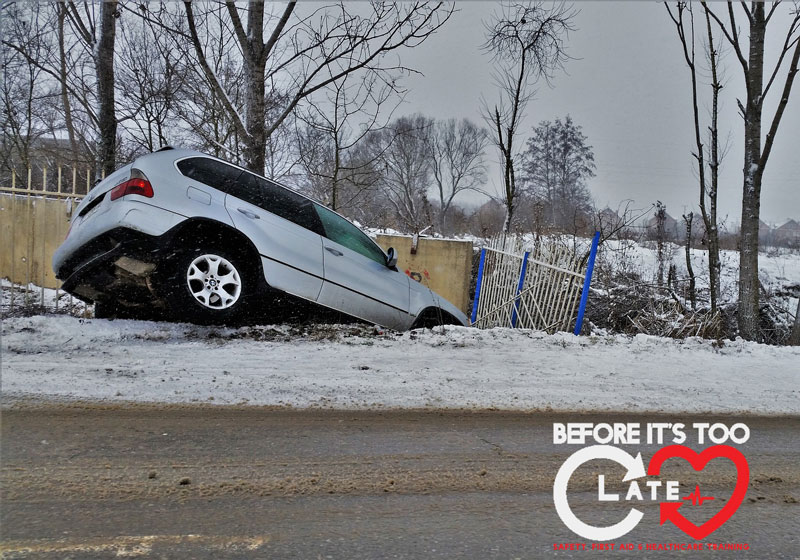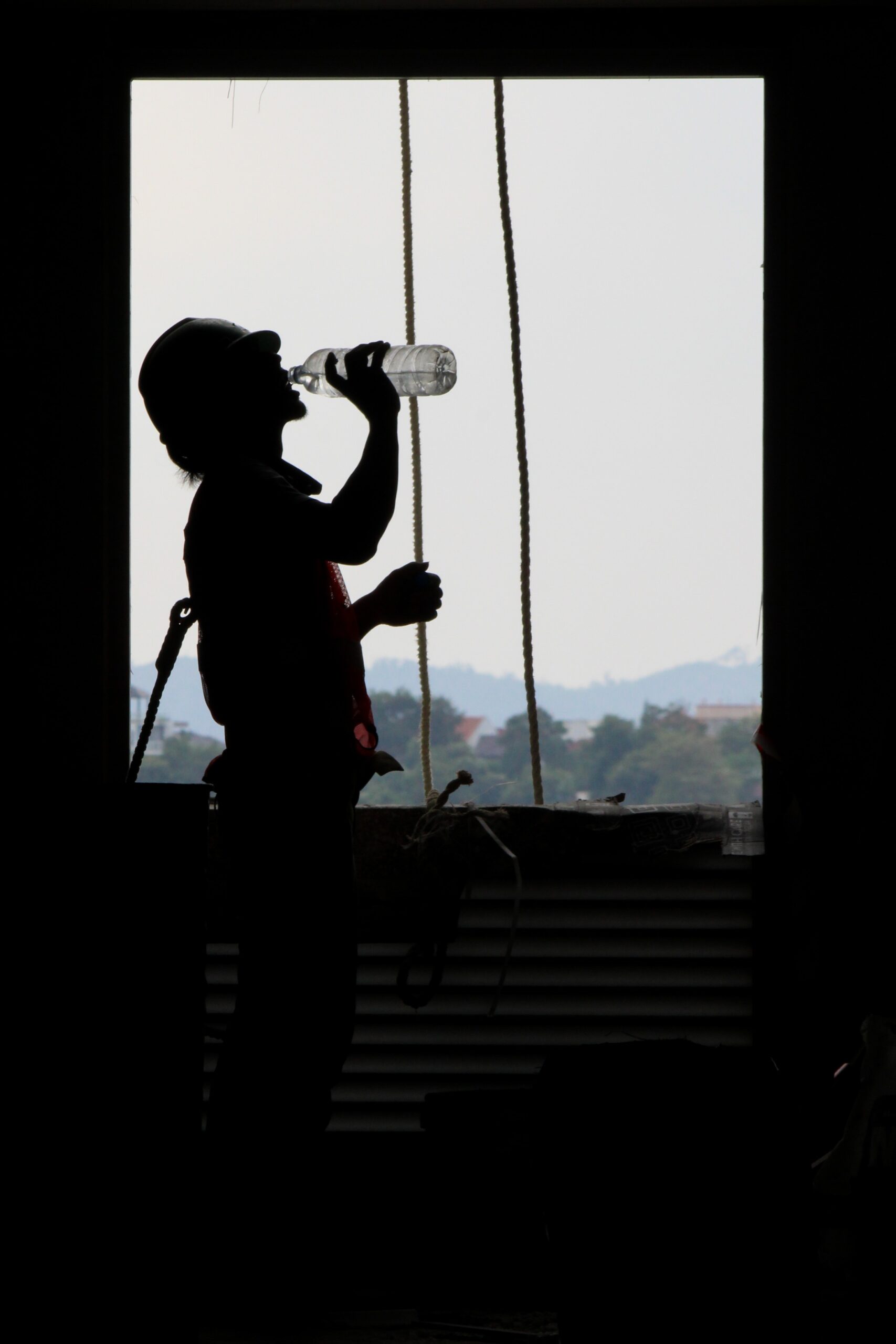Being able to recognize an emergency situation is just as important as responding to one. When you are planning on intervening in an emergency situation it is always important to make sure you are not putting yourself at risk. Think about it, it’s great having the skills needed to help a victim, but if you are putting yourself in danger that is never a good recipe. Actually, it is a recipe for disaster because you could be making the situation twice as BAD! First, lets go over a few emergency situations and then we can talk about the proper steps to take when responding.
Examples of emergency situations
Disclaimer: Of course, B42L is a huge advocate for helping others in need, but let’s make sure we are protecting ourselves and alerting proper medical or emergency response teams when we need to. If you ever think a situation is too dangerous or risky to handle alone, you should always call 911 or a designated emergency number.
- Cardiac emergencies: Heart attacks, Sudden Cardiac Arrest, breathing emergencies
- Choking
- Bleeding emergencies (yes nosebleeds can be an emergency too)
- Sudden illnesses: Diabetic emergencies, shock, allergic reactions, seizures
- Suspected broken bones/bruising
- Environmental emergencies: Heat related or cold related situations
- Poisoning
More importantly, we should point out that the emergencies above are not the only situations you may be faced with. Being prepared for a multitude of situations is always the best precautionary step to saving a life.
How should I handle an emergency situation?
There isn’t a blanket response to this question. Although, you should always have sound judgment and keep calm. The victim suffering is most likely experiencing not only physical pain but some type of emotional and situational turmoil in their head. Victims frequently ask questions in the “What-if category”.
- What if no one can help me?
- What if they don’t get here in time?
- What if this person helping me doesn’t know what they are doing?
As a responder, you don’t need to have every answer at your disposal. It is imperative you keep the victim calm, and assure them that you have the situation under control. Here is a quick step by step reference when you need to recognize something is taking place and decide what the best plan of action is to respond.
NOTE: You should always get consent when responding to someone in an emergency situation. There are instances where consent is implied, but a simple, “Can I help? I’m trained in First Aid” goes a long way.
- Check the scene, then check the person
It may be retrospective thinking to actually ask yourself, “ Is this scene safe for me to enter or intervene?” This question though really can help mitigate risk and assure the proper tools and personnel arrive. A good example we like to give is responding to a car accident. At first glance you may think to just pull off to the side of the road and start helping immediately. You are superman so why not right? No!
Let’s take another look at the situation. Not only is there a car accident, but it is also rush hour, raining, and you are on a highway. In this situation your best plan of attack is pulling off to the side of the road and making a quick phone call. Describe to the proper authority what you see and use any clues to help pass information along.
Checking the scene makes sure nothing will happen to you when you respond. If you have deemed your scene safe to enter, proceed by checking the person. Make note if the victim is conscious or not and then use them to help assess the situation at hand. You can ask them all about how they got into this situation and use your first aid skills to help them out. If the victim is not conscious, CALL 911 or the designated number immediately. Furthermore, you can proceed to care within your scope of practice and certification.
- Call the appropriate phone number
When you have assessed the scene, now you have to make the BOLD call. 911 is the best phone contact but sometimes there are other designated numbers in place so be mindful of that small detail. It is important either way to call someone and alert others of the situation. One large role you will play is being the leader in this situation. The bystander effect occurs when people observe a situation and think someone else will take care of it. This happens for many reasons, but we won’t get into the details. The big takeaway is having other people assist when they can. You can delegate others to go fetch first aid kits, AEDs or even call the appropriate number as you care for the victim.
Another key point you have to be able to recognize is sometimes calling authorities is not the best idea. A small scrape on your elbow most likely won’t render a trip in an ambulance, but again if at any point a situation is out of your comfort level, make the call. Being trained to recognize CALL first vs CARE first situations is important and we encourage you to become trained in these skills.
- Care for the Individual
Caring for someone is our next step. When providing care to anyone in an emergency situation always make sure to use proper PPE (Personal Protective Equipment). Furthermore, proper PPE can lower the risk for infection and the spread of disease. If we look back to the emergency situations listed above, of course protocol will be different for any situation you are faced with so being properly trained and knowledgeable about each circumstance is imperative.
Here are a few things to keep in mind when you are caring for someone:
Only do what you are trained to do (act within your scope of practice)
This is really important. When you care for someone, it is noteworthy to provide care that is consistent with your level of training and certification. That means Youtube tutorials are not the best resource when caring for a bleeding emergency. When you administer care consistent with your degree of training you are ensuring you are protecting the victim and protecting yourself.
Provide care until EMS or authorities take over
Now that you have decided to care, you can’t get cold feet. Be confident in your decision making and stay calm as you provide care. Additionally, you should always stay with the victim until someone else can take over with more training. You should also brief medical personnel of what care you have performed and any information about the victim: allergies, head to toe check assessments, any interviewing that has taken place.
Be prepared for the situation to change
While you are caring for someone you should continuously monitor them. If a person is experiencing a heart attack, their situation could get worse if they slip into Sudden Cardiac Arrest. You need to be able to roll with the emergency at hand and have predictive judgment. Make note of their signs and symptoms as time passes. A good example could be someone experiencing a stroke.
Example notes:
- At 1:30 pm the victim experienced pain in their left shoulder
- At 1:35 pm the victims facial muscles began to droop on the left side
- At 1:40 pm the victim could not produce speech
And the notes could continue…
Relay all of this information to the authorities and EMS personnel. It is the best way to help them know where the victim is on a timeline basis.
Take Away:
Being able to recognize to an emergency is just as important as responding to one. You should always get consent when providing care to an individual and you should never put yourself at risk. Assessing a scene can help decide what plan of attack you will have to help respond and alerting the proper emergency contact should never be forgotten. Lastly, if you do not think you can perform these skills, we encourage you to take a class and become certified. B42L has had numerous cases where trained students have responded to emergency situations. In 2017, a student actually responded to someone suffering Cardiac Arrest on campus. She saved his life. Check the whole story out below:
Slippery Rock University Student Saves The Life of a Fellow Student Suffering From Cardiac Arrest
https://www.youtube.com/watch?v=4_iHFivnn-U&t=7
Resources to get trained:
Was this helpful? Leave a comment and connect with us on social media or you can visit our website at B42L.com






Awesome information here!
Great information that everyone should be aware of in the case of an emergency. Great article!
Link exchange is nothing else but it is just placing the
other person’s web site link on your page at proper place and other person will also do same in support of you.